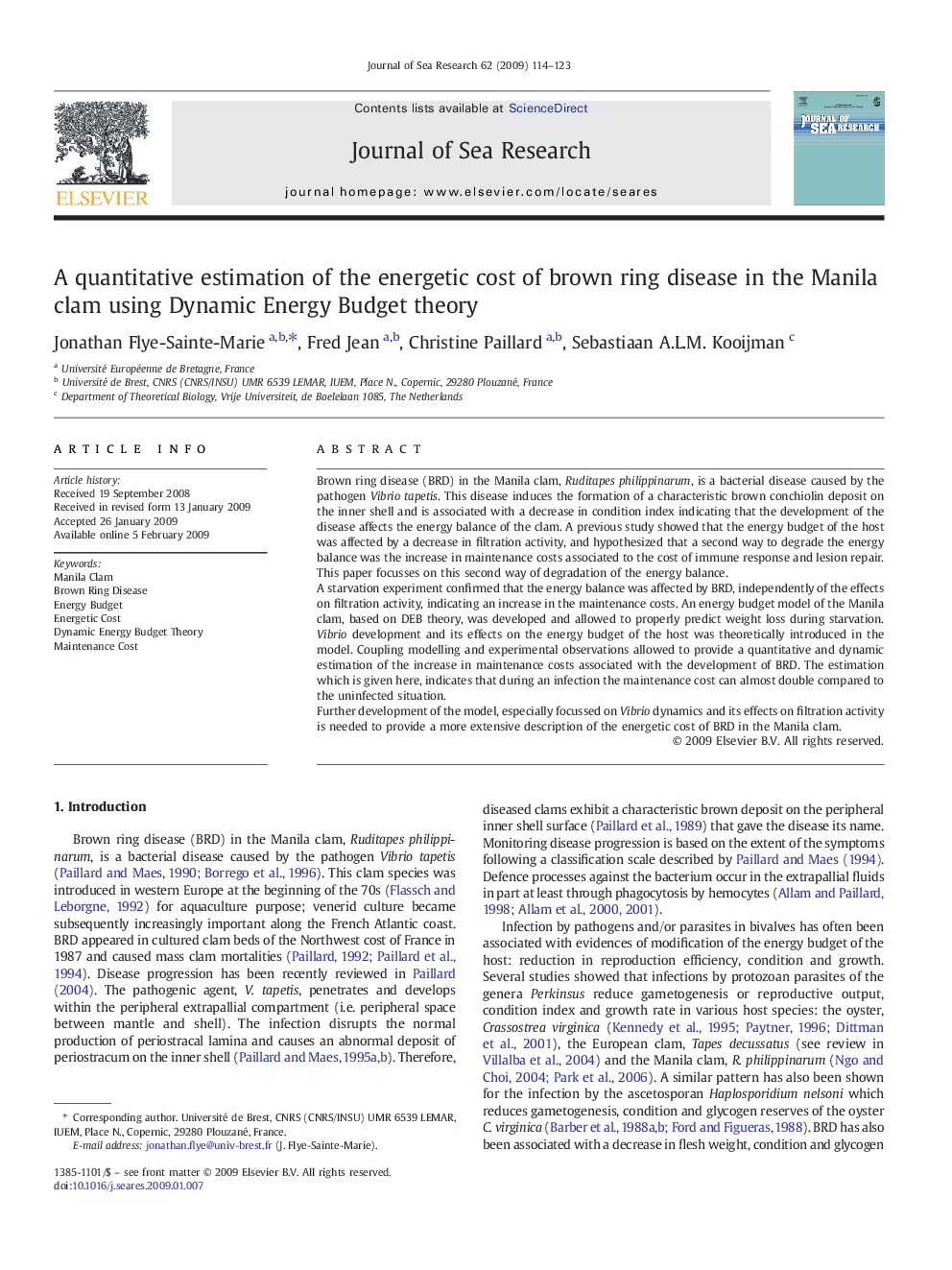| Article ID | Journal | Published Year | Pages | File Type |
|---|---|---|---|---|
| 4550291 | Journal of Sea Research | 2009 | 10 Pages |
Brown ring disease (BRD) in the Manila clam, Ruditapes philippinarum, is a bacterial disease caused by the pathogen Vibrio tapetis. This disease induces the formation of a characteristic brown conchiolin deposit on the inner shell and is associated with a decrease in condition index indicating that the development of the disease affects the energy balance of the clam. A previous study showed that the energy budget of the host was affected by a decrease in filtration activity, and hypothesized that a second way to degrade the energy balance was the increase in maintenance costs associated to the cost of immune response and lesion repair. This paper focusses on this second way of degradation of the energy balance.A starvation experiment confirmed that the energy balance was affected by BRD, independently of the effects on filtration activity, indicating an increase in the maintenance costs. An energy budget model of the Manila clam, based on DEB theory, was developed and allowed to properly predict weight loss during starvation. Vibrio development and its effects on the energy budget of the host was theoretically introduced in the model. Coupling modelling and experimental observations allowed to provide a quantitative and dynamic estimation of the increase in maintenance costs associated with the development of BRD. The estimation which is given here, indicates that during an infection the maintenance cost can almost double compared to the uninfected situation.Further development of the model, especially focussed on Vibrio dynamics and its effects on filtration activity is needed to provide a more extensive description of the energetic cost of BRD in the Manila clam.
